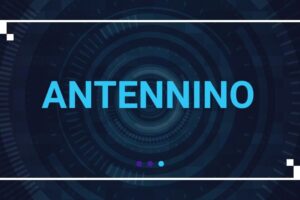In a world overflowing with data, the ability to extract value from information has become a business superpower. Figgs AI is a next-generation artificial intelligence platform transforming the way organizations handle data, decision-making, and growth. With powerful machine learning algorithms and user-friendly interfaces, Figgs AI is bridging the gap between raw data and actionable insights.
What Is Figgs AI?
Figgs AI is a cutting-edge artificial intelligence system designed to assist businesses in harnessing the full potential of their data. It integrates advanced analytics, machine learning, natural language processing (NLP), and business intelligence (BI) tools into a unified platform. This makes it a one-stop solution for data-driven decision-making.
The Evolution of Business Intelligence
Business intelligence has evolved from traditional reporting tools to dynamic AI-powered platforms. Earlier, BI systems could only display historical data. Today, tools like Figgs AI offer predictive analytics, automation, and real-time insights that help businesses stay competitive in fast-changing markets.
Core Features of Figgs AI
Figgs AI is built with several high-performance features:
Real-time data processing
Predictive analytics
No-code model building
Natural language query support
Seamless integration with existing tools (like Excel, Tableau, Salesforce)
These features empower teams to work smarter, not harder.
Data Visualization Made Easy
One of Figgs AI’s most appreciated features is its intuitive data visualization dashboard. Even users without a technical background can easily understand complex data patterns through interactive charts, graphs, and heatmaps. This simplicity makes data analysis accessible to every stakeholder.
Machine Learning for Predictive Insights
Figgs AI uses machine learning algorithms to forecast trends and outcomes. For example, it can predict customer churn, inventory needs, or market behavior. These predictions are based on real-time and historical data, allowing businesses to be proactive instead of reactive.
Automating Routine Decisions
One of the standout capabilities of Figgs AI is its automation engine. It can automatically generate reports, send alerts, or even make operational decisions based on predefined rules. This reduces human error and frees up valuable time for strategic thinking.
Integration with Enterprise Systems
Figgs AI is designed to plug into your existing tech stack. Whether you use cloud storage, CRM platforms, or ERP systems, Figgs AI can connect and extract value from all your data sources. Its API-first approach ensures smooth deployment across departments.
Natural Language Processing Interface
Not everyone speaks “data.” Figgs AI solves this with a natural language interface. Users can type queries like “What were last month’s top-selling products?” and receive accurate results instantly. This NLP feature democratizes data access across your organization.
Security and Compliance
With increasing concerns about data privacy, Figgs AI offers enterprise-grade security features. These include role-based access control, encryption, GDPR compliance, and audit logs. Your data stays secure, private, and fully under your control.
Use Cases Across Industries
Figgs AI is not limited to a specific industry. It serves diverse sectors such as:
Retail: Optimizing inventory, pricing strategies, and customer engagement
Finance: Fraud detection, portfolio analysis, and regulatory compliance
Healthcare: Patient trend analysis, diagnosis prediction, and resource planning
Marketing: Campaign performance, sentiment analysis, and audience segmentation
The platform’s adaptability makes it suitable for startups, mid-sized firms, and global enterprises alike.
Boosting Collaboration Across Teams
Collaboration is vital in decision-making. Figgs AI enables teams to share dashboards, annotations, and reports with ease. Real-time updates ensure that everyone is working with the latest data, fostering unified and informed actions.
Cost-Efficiency and ROI
Implementing Figgs AI is an investment that pays off quickly. By automating analysis and reducing decision latency, businesses save on labor costs and minimize errors. Its scalable architecture allows you to pay only for what you use, making it suitable for any budget.
User-Friendly Interface
The platform is designed with usability in mind. A clean interface, drag-and-drop functionalities, and guided workflows make it easy for non-technical users to navigate. No need for a data science degree to operate Figgs AI!
Competitive Advantage with AI
Companies that leverage Figgs AI gain a sharp competitive edge. It allows them to respond to changes faster, understand their customers better, and innovate without guessing. In a data-driven economy, staying ahead means being smart with your information.
How to Get Started with Figgs AI
Getting started is easy. Businesses can sign up for a demo or trial, connect their data sources, and begin exploring insights immediately. Figgs AI offers onboarding support, tutorials, and live customer assistance to ensure a smooth experience.
The Future of AI-Powered Business Tools
AI is the future, and Fi’ggs AI is at the forefront of this transformation. As the technology matures, expect more advanced features like deep learning, automatic anomaly detection, and voice-activated insights. Fig’gs AI is continuously evolving to meet tomorrow’s business needs.
Conclusion
Fig’gs AI is more than just a data tool—it’s a strategic partner in business success. It enables smarter decisions, streamlines operations, and puts the power of AI in everyone’s hands. Whether you’re a startup founder or a Fortune 500 executive, Figgs AI has the potential to transform how you work with data.
FAQs
What makes Figg’s AI different from other AI platforms?
F’iggs AI stands out for its user-friendly interface, natural language query system, and seamless integrations, which make it accessible to all users—not just data scientists.
Is F’iggs AI suitable for small businesses?
Absolutely. Its scalable pricing and ease of use make it perfect for small businesses looking to become more data-driven without huge overhead.
Can Fi’ggs AI be used without coding knowledge?
Yes. Fi’ggs AI offers a no-code environment that allows users to build models and run analyses without writing a single line of code.
How secure is my data with Fig’gs AI?
Fi’ggs AI adheres to strict data security protocols, including encryption, GDPR compliance, and role-based access controls, ensuring your data remains safe.
How fast can Fig’gs AI deliver insights?
Thanks to real-time processing, Figgs AI can deliver insights within seconds after querying, helping businesses make faster, informed decisions.


 Blog6 months ago
Blog6 months ago
 Entertainment6 months ago
Entertainment6 months ago
 Technology3 months ago
Technology3 months ago
 News6 months ago
News6 months ago
 Blog6 months ago
Blog6 months ago
 Blog6 months ago
Blog6 months ago
 Technology6 months ago
Technology6 months ago
 Blog6 months ago
Blog6 months ago


